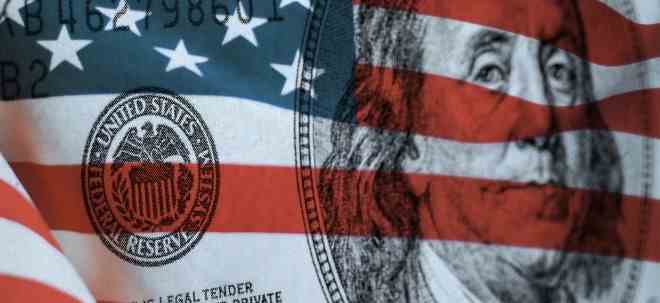Further tightening is appropriate to bring inflation back to the Fed’s 2 percent target, the central bank said in a statement Wednesday night. Analysts and investors have been eagerly awaiting such an indication as high inflation has fallen recently and the economy is weakening. Both speak actually more against than for additional streamlining.
The Fed had taken particularly aggressive action against the high rate of inflation in recent months and had increased interest rates at a rapid pace. The drastic measures are the result of inflation, which at times was higher than it had been in decades. The inflation rate in the USA had recently fallen further – an indication of the first successes of the strict monetary policy. In December, consumer prices rose by 6.5 percent compared to the same month last year. In November, the rate was 7.1 percent. It was the sixth decline in the inflation rate in a row – but it is still high.
Fed Chair Jerome Powell had already made it clear in December: “We will stay the course until the job is done.” In December, the Fed predicted it would hike rates to just over 5 percent this year. In its most recent economic forecast, the International Monetary Fund (IMF) also stressed that the central banks should not let up despite initial successes in their fight against high consumer prices. The battle is not yet won.
The strong US labor market is likely to remain a problem for Fed Chair Powell. Unemployment fell surprisingly at the end of last year and had reached its lowest level in almost three years. In December, the unemployment rate fell to 3.5 percent. While that’s good news in itself, a labor shortage in key industries can fuel inflation. There is a risk of a wage-price spiral. However, wages have recently risen less than expected.
Keeping inflation in check is the traditional task of central banks. In the medium term, the Fed is aiming for an average inflation rate of around 2 percent. If interest rates rise, private individuals and businesses have to spend more money on loans – or they borrow less money. Growth is slowing, companies cannot simply pass on higher prices, and ideally inflation is falling. With such a tight monetary policy, however, the risk also increases that the central bank slows down the economy so much that it stalls. However, the US economy had grown surprisingly strongly at the end of last year, which has reduced concerns about a possible recession.
The European Central Bank (ECB) is also about to raise interest rates again. The Governing Council of the ECB is expected to raise the key interest rate in the euro area again at its meeting this Thursday. In December, the ECB decided to hike interest rates by 0.50 percentage points to 2.50 percent. ECB President Christine Lagarde promised further increases of this magnitude “for some time”.
Fed Chair Powell sees no rate cuts this year
In all likelihood, the US Federal Reserve will not ease its monetary policy this year. If the economy develops more or less as expected, interest rate cuts in the current year are not appropriate, said Fed Chairman Jerome Powell on Wednesday evening after the Fed’s interest rate decision in Washington.
Powell countered speculation on the financial markets that the US Federal Reserve could start cutting interest rates this year. The background is recession fears, which could ultimately persuade the Fed to abandon its fight against high inflation.
Since last March, the Fed has raised its key interest rate sharply by a total of 4.5 percentage points. It wants to bring high inflation under control. On Wednesday, interest rates were raised by 0.25 points to between 4.5 and 4.75 percent after the monetary policy meeting.
WASHINGTON (dpa-AFX)
Image sources: Mesut Dogan / Shutterstock.com, tlegend / Shutterstock.com

